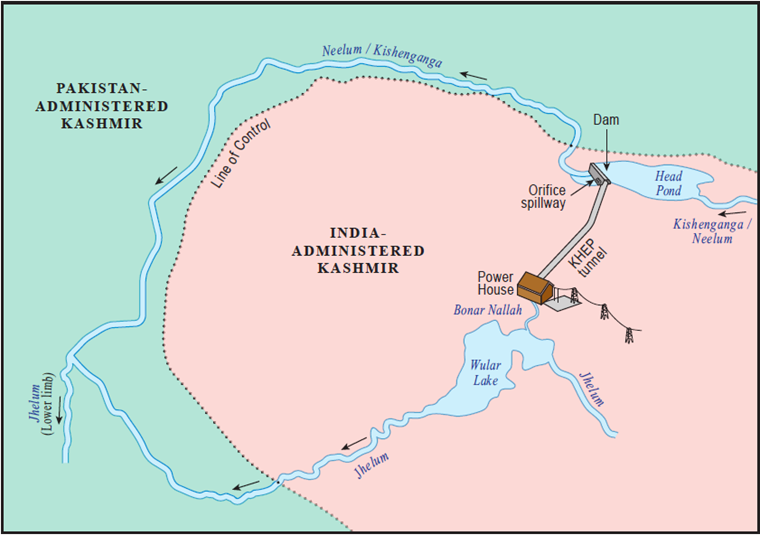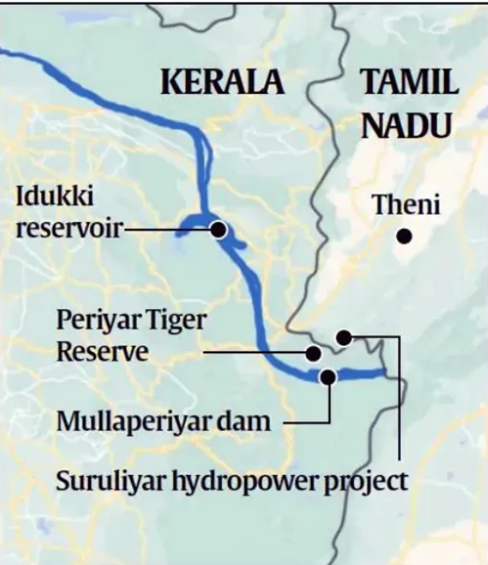- Courses
- GS Full Course 1 Year
- GS Full Course 2 Year
- GS Full Course 3 Year
- GS Full Course Till Selection
- Answer Alpha: Mains 2025 Mentorship
- MEP (Mains Enrichment Programme) Data, Facts
- Essay Target – 150+ Marks
- Online Program
- GS Recorded Course
- Polity
- Geography
- Economy
- Ancient, Medieval and Art & Culture AMAC
- Modern India, Post Independence & World History
- Environment
- Governance
- Science & Technology
- International Relations and Internal Security
- Disaster Management
- Ethics
- NCERT Current Affairs
- Indian Society and Social Issue
- NCERT- Science and Technology
- NCERT - Geography
- NCERT - Ancient History
- NCERT- World History
- NCERT Modern History
- CSAT
- 5 LAYERED ARJUNA Mentorship
- Public Administration Optional
- ABOUT US
- OUR TOPPERS
- TEST SERIES
- FREE STUDY MATERIAL
- VIDEOS
- CONTACT US
PLACES IN NEWS 1st JULY 2025
PLACES IN NEWS 1st JULY 2025
01-07-2025

1. Kishanganga Hydropower Project

Why in the News?
- India has strongly rejected a recent "supplemental award" issued by the Court of Arbitration regarding the Kishanganga hydroelectric projects in Jammu and Kashmir.
- India said the Court has no legal standing and that it violated the Indus Waters Treaty (IWT), which India has now suspended after a terror attack in April 2025.
What are the Key Highlights?
- Location
- Country: India
- Union Territory: Jammu and Kashmir
- District: Bandipora
- Nearest Town: Bandipora town
- Village near dam site: Kralpora village, Gurez Valley
- River System
- River: Kishanganga River (called Neelum River in Pakistan)
- Tributary of: Jhelum River
- River Origin: Originates in the Drass sector of the Himalayas near the Line of Control (LoC)
- River Path: Flows through Gurez Valley (India) → Crosses LoC → Enters Pakistan-administered Kashmir → Joins Jhelum River at Muzaffarabad
- Coordinates
- Approximate Latitude: 34.63° N
- Approximate Longitude: 74.78° E
- Topography and Terrain
- Located in high Himalayan mountain region
- Terrain is rugged and mountainous
- Project elevation ranges between 1,650 to 2,000 metres above sea level
- Water Diversion and Infrastructure
- Water is diverted through a 23.5 km headrace tunnel from the Kishanganga River to a power station located near Bonar Nallah, a tributary of the Jhelum River
- Includes a 37-metre-high concrete-face rock-fill dam
- The water after power generation is discharged into the Jhelum basin
- Hydrological Zone
- Lies within the Western Himalayan hydrological region
- Receives water primarily from glacial melt and seasonal snowfall, making it a perennial river
- Accessibility
- Due to mountainous terrain and heavy snowfall, the region remains inaccessible during peak winter
- The project site is connected to Bandipora via a mountain road, which is sometimes affected by landslides and snow
- Strategic Location
- Located very close to the Line of Control (LoC) between India and Pakistan
- The area is geopolitically sensitive due to its proximity to the LoC and shared river system with Pakistan
2. Mullaperiyar Dam

Why in the News?
- Tamil Nadu released water from the Mullaperiyar dam by opening all 13 spillway shutters.
- It happened after the water level exceeded the rule curve (136.4 ft against 136.3 ft), highlighting interstate water management dynamics.
- 999-Year Lease Agreement Highlighted: The incident brought attention back to the unique colonial-era lease agreement under which Tamil Nadu operates the dam.
- The Idukki reservoir, downstream in Kerala, recorded significantly higher water storage this year (June 2025) compared to the same period last year.
- It is an important indicator in monsoon-related dam management and hydroelectric planning.
About Mullaperiyar Dam
- Location: The Mullaperiyar Dam is located in the Cardamom Hills of the Western Ghats, near Kumily, on the Kerala-Tamil Nadu border in Idukki district.
- Construction: Completed in 1895, the dam was built using a mix of limestone and Surkhi.
- It diverts water from Kerala’s Periyar River to Tamil Nadu’s Vaigai basin to meet irrigation and drinking water needs.
- Significance: The dam is vital for supplying water to southern districts of Tamil Nadu for both agriculture and domestic use.
- Inter-State Dispute: It has been a subject of long-standing disagreement between Kerala and Tamil Nadu, mainly over issues related to safety and control of its operations.




